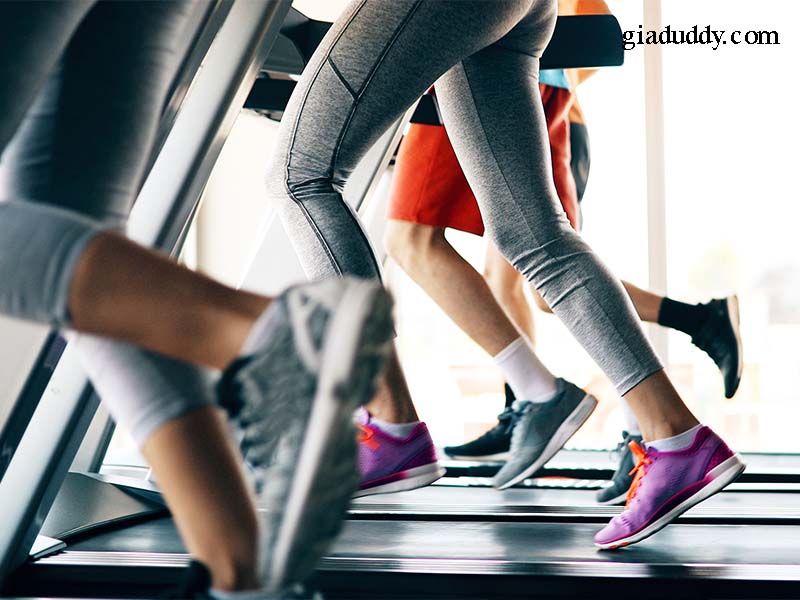The Physical Activity Pyramid serves as a guiding framework for individuals seeking to incorporate exercise into their daily lives. It categorizes various forms of physical activity and emphasizes the importance of balancing these activities for overall health and well-being. Among the diverse categories depicted in this pyramid, lifestyle activities hold a prominent position, emphasizing their significance in promoting an active lifestyle. In this article, we will explore where lifestyle activities belong on the Physical Activity Pyramid, their benefits, and how they can be integrated into daily routines to enhance overall health.
The Physical Activity Pyramid: An Overview
Before delving into lifestyle activities, it’s essential to understand the structure of the Physical Activity Pyramid. This pyramid typically consists of several levels, each representing different types of physical activities:
- Sedentary Activities: At the base of the pyramid are sedentary activities, which include behaviors that require little to no movement, such as watching television, sitting at a desk, or using a computer. This level emphasizes the importance of reducing sedentary behavior for better health outcomes.
- Lifestyle Activities: Above sedentary activities, lifestyle activities form a crucial part of the pyramid. These activities include everyday movements that contribute to physical fitness without requiring structured exercise sessions. Examples include walking, gardening, cleaning, and playing with children.
- Aerobic Activities: The next level of the pyramid comprises aerobic activities, which are more structured forms of exercise designed to improve cardiovascular endurance. These may include brisk walking, running, cycling, and swimming. Engaging in aerobic activities several times a week is essential for maintaining heart health and overall fitness.
- Flexibility Activities: Above aerobic activities, the pyramid includes flexibility activities, which focus on enhancing the range of motion in muscles and joints. These activities can include stretching exercises, yoga, and Pilates. Flexibility training is vital for injury prevention and maintaining functional movement.
- Strength Training: At the top of the pyramid is strength training, which involves exercises designed to improve muscle strength and endurance. This can include weight lifting, resistance training, and bodyweight exercises. Strength training is essential for building and maintaining muscle mass, especially as individuals age.
Where Do Lifestyle Activities Fit In?
Lifestyle activities belong to the second tier of the Physical Activity Pyramid, directly above sedentary activities. This placement highlights the importance of incorporating movement into daily routines to combat sedentary behavior and promote a more active lifestyle. Unlike structured exercise routines, lifestyle activities are often less formal and can be seamlessly integrated into everyday life.
Defining Lifestyle Activities
Lifestyle activities refer to any movement that individuals engage in during their daily lives, which can contribute to their overall physical activity levels. These activities can include:
- Walking: Simple acts such as walking to work, taking the stairs instead of the elevator, or strolling in the park contribute significantly to daily physical activity levels.
- Household Chores: Engaging in cleaning, gardening, or other household tasks not only keeps the home environment tidy but also serves as an effective way to increase daily movement.
- Active Transportation: Choosing to bike or walk for short errands rather than driving contributes to physical activity while promoting sustainability.
- Playing: Engaging in playful activities with children or pets not only fosters social connections but also encourages movement.
- Occupational Activities: Many jobs require physical movement, whether standing, walking, or lifting. This category can significantly add to overall physical activity levels.
The Importance of Lifestyle Activities
- Accessibility: One of the most significant advantages of lifestyle activities is their accessibility. Unlike structured workouts that may require gym memberships or specialized equipment, lifestyle activities can be performed by anyone, anywhere, at little to no cost. This inclusivity promotes physical activity across diverse populations.
- Consistency: Integrating lifestyle activities into daily routines can lead to more consistent physical activity levels. When movement becomes a part of everyday life, individuals are more likely to maintain regular activity without feeling the pressure of formal exercise programs.
- Health Benefits: Engaging in lifestyle activities contributes to numerous health benefits, including improved cardiovascular health, enhanced mood, increased energy levels, and better overall physical fitness. Research consistently shows that even moderate levels of physical activity can significantly reduce the risk of chronic diseases such as heart disease, diabetes, and obesity.
- Social Interaction: Many lifestyle activities involve social interaction, whether it’s playing with children, walking with friends, or participating in community gardening. This social aspect can enhance motivation and enjoyment, making physical activity a more pleasurable experience.
- Mental Health Benefits: Regular movement through lifestyle activities has been shown to improve mental health by reducing stress, anxiety, and symptoms of depression. Incorporating movement into daily life can serve as a natural mood booster.
Strategies for Incorporating Lifestyle Activities
To fully embrace the benefits of lifestyle activities, individuals can adopt several strategies to seamlessly integrate them into their daily routines:
- Set Realistic Goals: Start small by setting achievable goals for incorporating movement into your day. This could include aiming for a 10-minute walk after meals or taking the stairs whenever possible.
- Make it Enjoyable: Choose activities that you enjoy to make movement feel less like a chore. Whether it’s dancing, gardening, or walking in nature, finding pleasure in physical activity can lead to long-term adherence.
- Utilize Technology: Consider using smartphone apps or wearable fitness trackers to monitor your daily activity levels. Many of these tools can help set reminders to move throughout the day.
- Social Engagement: Invite friends or family to join in on activities. Engaging in lifestyle activities with others can enhance enjoyment and motivation.
- Be Mindful of Sedentary Time: Identify times during the day when you can break up prolonged sitting. For example, stand while talking on the phone or take short movement breaks during work.
- Incorporate Movement into Daily Tasks: Look for opportunities to add movement into everyday tasks. For instance, do calf raises while waiting for food to cook or stretch during TV commercials.
The Role of Lifestyle Activities in Public Health
Public health campaigns have increasingly recognized the significance of lifestyle activities in promoting population health. Encouraging communities to embrace these activities can lead to healthier lifestyles, reduce healthcare costs, and improve quality of life.
- Community Programs: Local governments and organizations can develop programs that encourage walking or biking in neighborhoods, promote active transportation, or create community gardens. These initiatives can foster a culture of movement and physical activity.
- Education: Providing education about the benefits of lifestyle activities can empower individuals to make healthier choices. Workshops, seminars, and online resources can help raise awareness of how small changes in daily routines can lead to significant health improvements.
- Workplace Initiatives: Employers can create workplace wellness programs that encourage employees to engage in lifestyle activities. This could include promoting walking meetings, providing standing desks, or organizing group fitness challenges.
- Policy Changes: Advocating for policies that promote active living, such as improving walkability in communities or increasing access to recreational spaces, can significantly impact public health by making it easier for individuals to engage in lifestyle activities.
Conclusion
In conclusion, lifestyle activities play a vital role on the Physical Activity Pyramid, positioned just above sedentary behaviors and serving as a foundation for a more active lifestyle. By recognizing the importance of these everyday movements, individuals can embrace a more active way of life that contributes to their overall health and well-being.
Integrating lifestyle activities into daily routines not only provides numerous health benefits but also fosters a sense of community and enjoyment. As public health initiatives increasingly emphasize the importance of these activities, individuals can take proactive steps to enhance their physical activity levels, reduce sedentary behavior, and ultimately improve their quality of life. Embrace lifestyle activities today and contribute to a healthier tomorrow.


